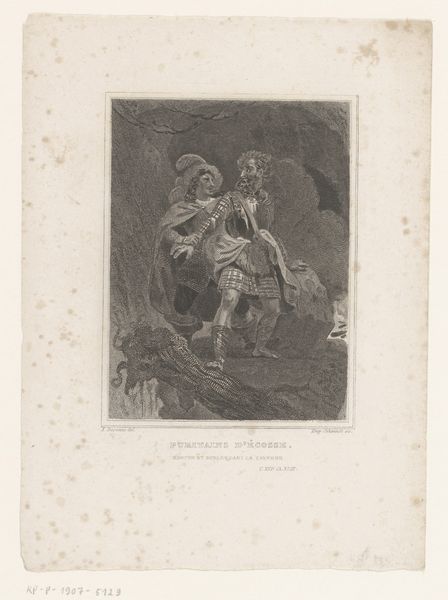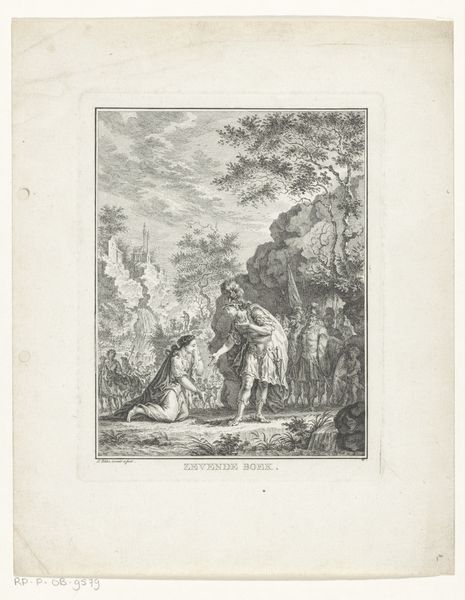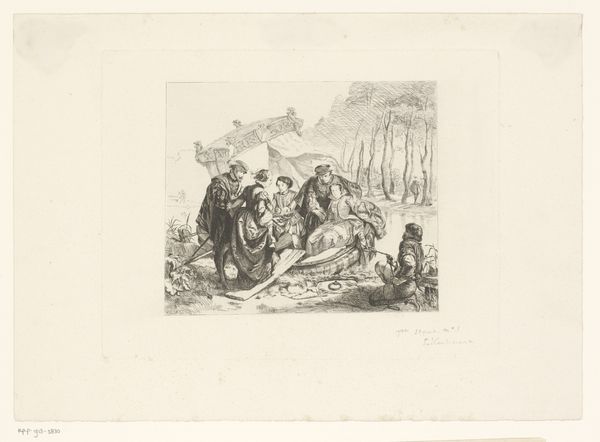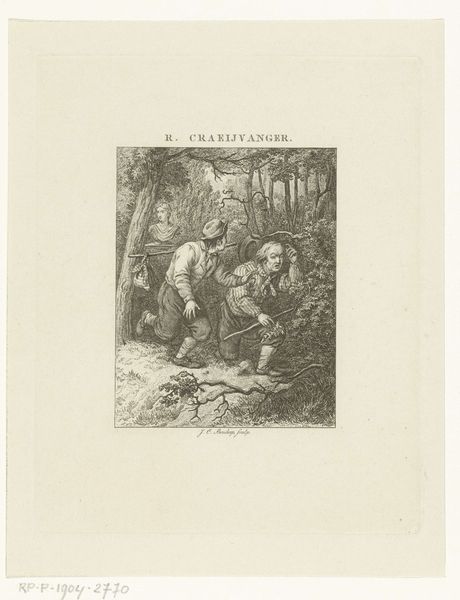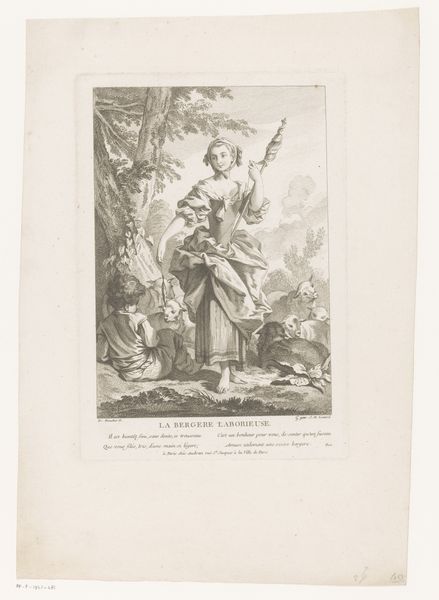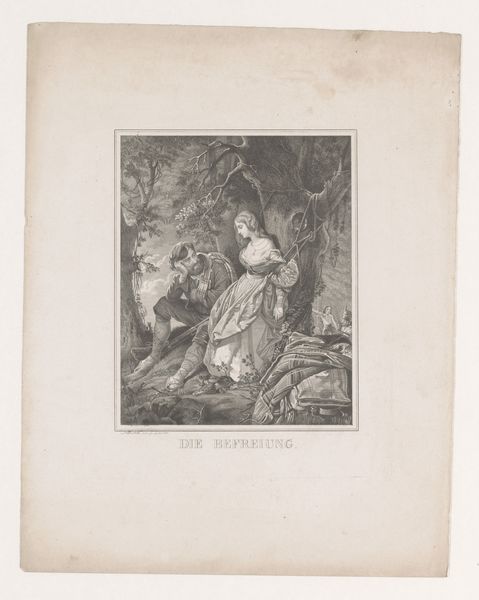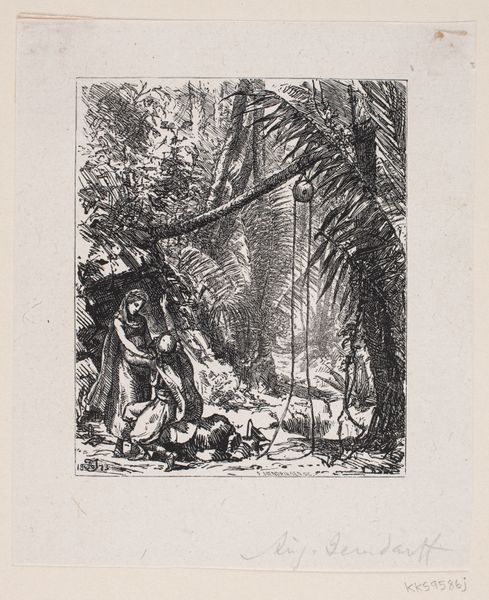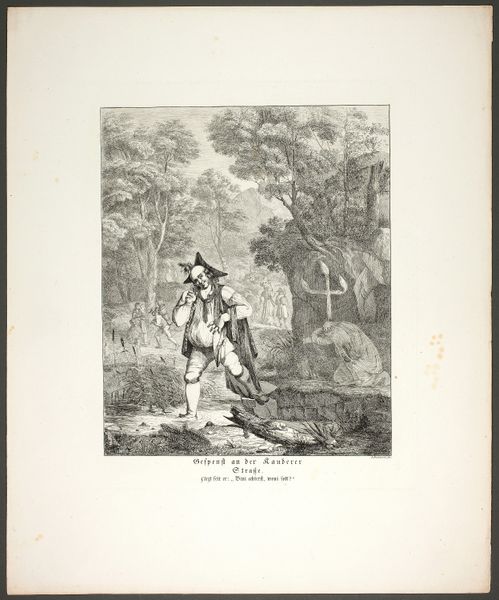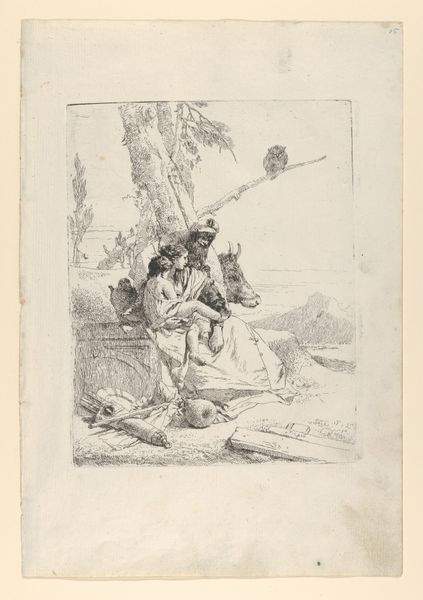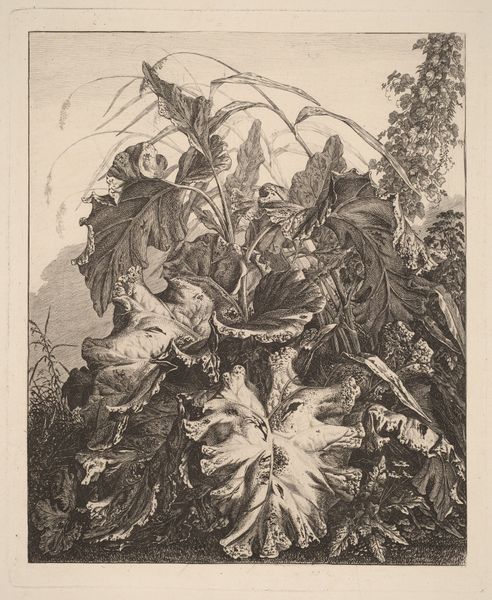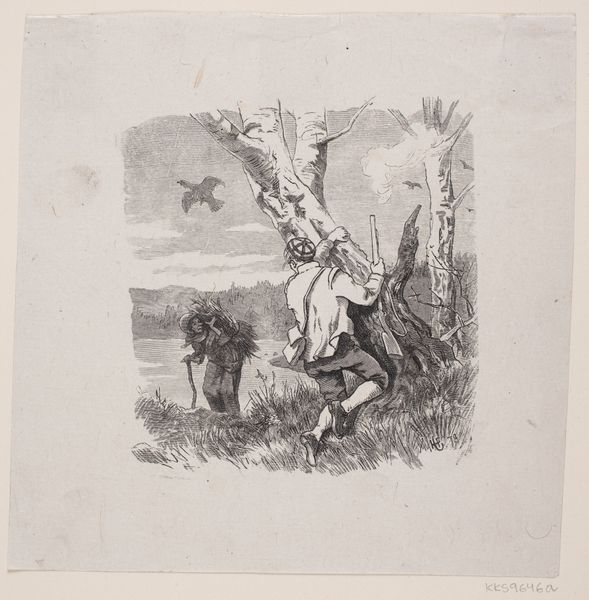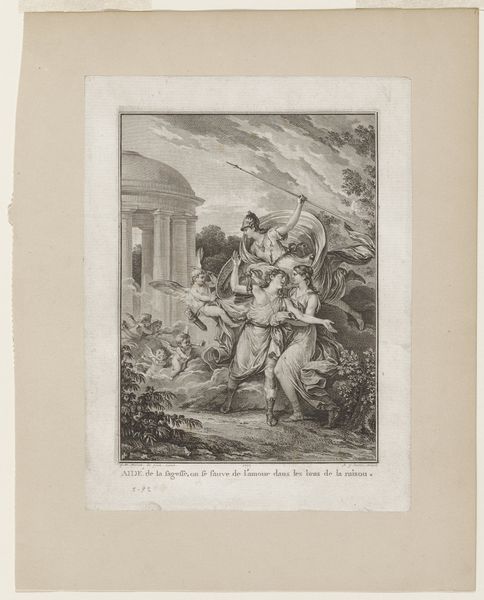
print, engraving
#
narrative-art
#
baroque
# print
#
landscape
#
figuration
#
pencil drawing
#
genre-painting
#
engraving
Dimensions: height 390 mm, width 277 mm
Copyright: Rijks Museum: Open Domain
Curator: This is “Dorpelingen met ezel houden halt bij herder” by A.J. Defehrt, made sometime between 1733 and 1774. It's an engraving. Editor: It's so intricate! My immediate impression is one of a staged pastoral scene. The tonality gives it a dreamlike quality. Curator: It very much encapsulates Baroque aesthetics, particularly in the narrative layering and idealization of rural life. Do you sense any particular cultural currents at play? Editor: Absolutely. The villagers encountering the shepherd isn’t simply a meeting, but a symbolic representation. The characters arranged almost like in a theatrical play and invite one to explore socio-economic relations through these interactions. Curator: The figures and the landscape each carry a weight of meaning, speaking to the values embedded within that society. A moment suspended, laden with implications. Editor: I’m drawn to how Defehrt creates texture in what seems like a monochromatic palette. Look at the meticulous use of line work; each line suggests light, depth and character, the artist seems to almost be playing with perception itself. Curator: Engravings, due to their reproducibility, have served to proliferate narratives, freezing archetypes that continue to echo even now. That echo becomes a component of the engraving itself. Editor: Precisely. And perhaps, the echo continues still. In this scene captured forever, that is where Defehrt succeeds in illustrating the pastoral sentiment and Baroque spirit of the era. Curator: This has brought forth, for me, reflections on narrative and pictorial style within Baroque art. Editor: I agree. This encounter shows us how Defehrt played with detail, composition, and tonality, creating an experience much bigger than the pastoral tableau at face value.
Comments
No comments
Be the first to comment and join the conversation on the ultimate creative platform.
